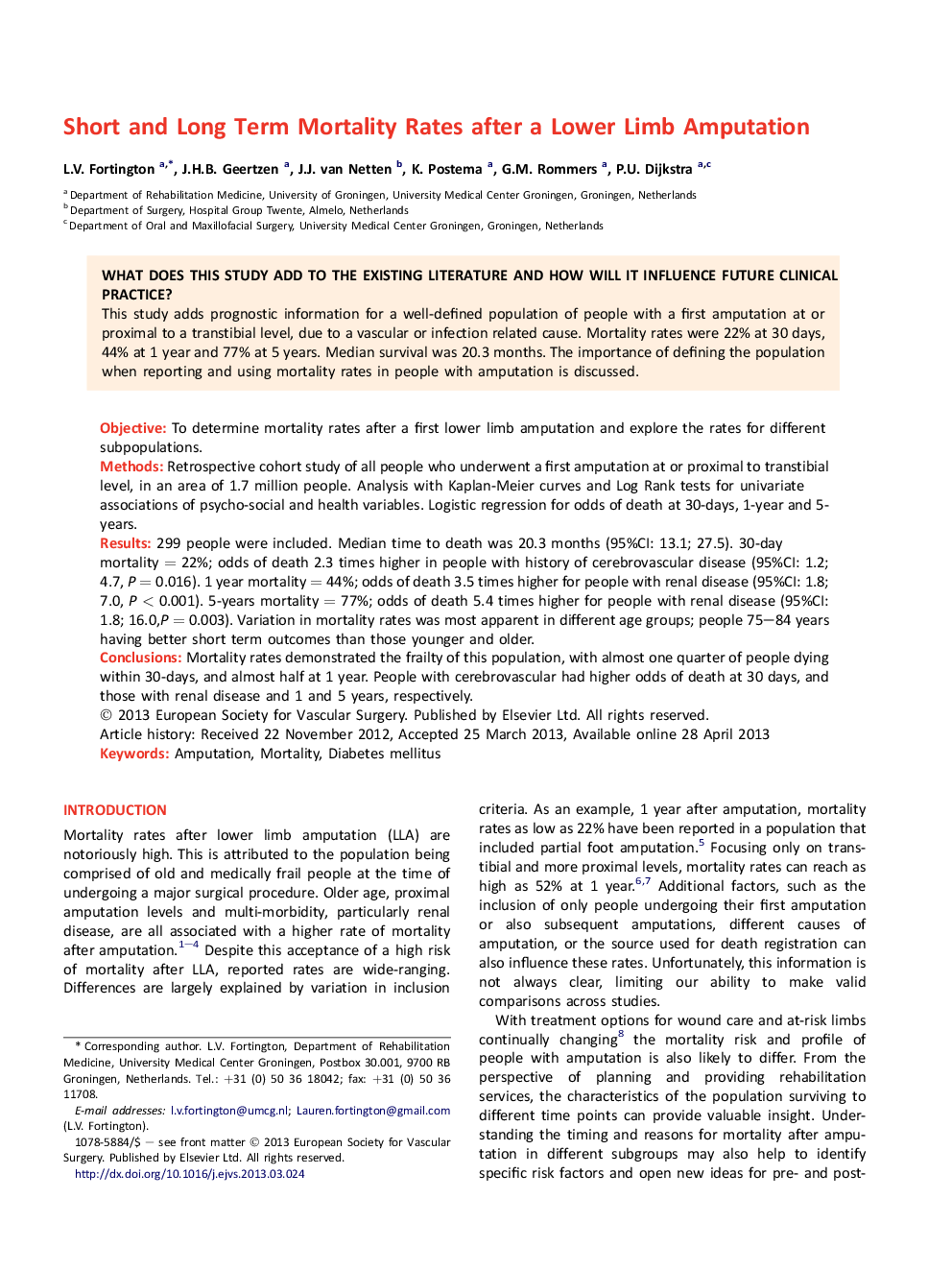| Article ID | Journal | Published Year | Pages | File Type |
|---|---|---|---|---|
| 2912343 | European Journal of Vascular and Endovascular Surgery | 2013 | 8 Pages |
ObjectiveTo determine mortality rates after a first lower limb amputation and explore the rates for different subpopulations.MethodsRetrospective cohort study of all people who underwent a first amputation at or proximal to transtibial level, in an area of 1.7 million people. Analysis with Kaplan-Meier curves and Log Rank tests for univariate associations of psycho-social and health variables. Logistic regression for odds of death at 30-days, 1-year and 5-years.Results299 people were included. Median time to death was 20.3 months (95%CI: 13.1; 27.5). 30-day mortality = 22%; odds of death 2.3 times higher in people with history of cerebrovascular disease (95%CI: 1.2; 4.7, P = 0.016). 1 year mortality = 44%; odds of death 3.5 times higher for people with renal disease (95%CI: 1.8; 7.0, P < 0.001). 5-years mortality = 77%; odds of death 5.4 times higher for people with renal disease (95%CI: 1.8; 16.0,P = 0.003). Variation in mortality rates was most apparent in different age groups; people 75–84 years having better short term outcomes than those younger and older.ConclusionsMortality rates demonstrated the frailty of this population, with almost one quarter of people dying within 30-days, and almost half at 1 year. People with cerebrovascular had higher odds of death at 30 days, and those with renal disease and 1 and 5 years, respectively.
